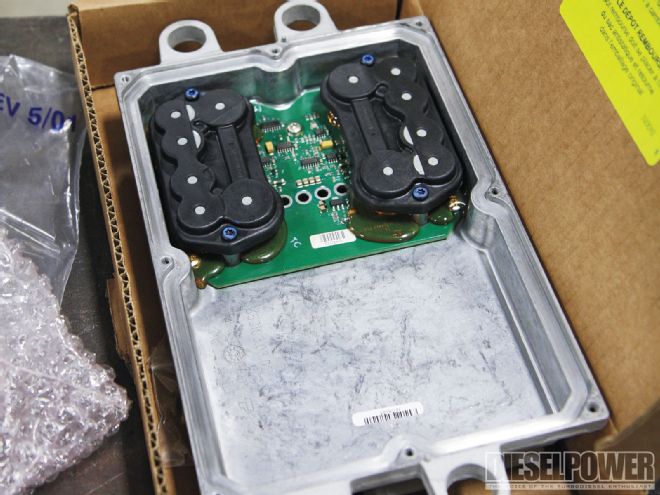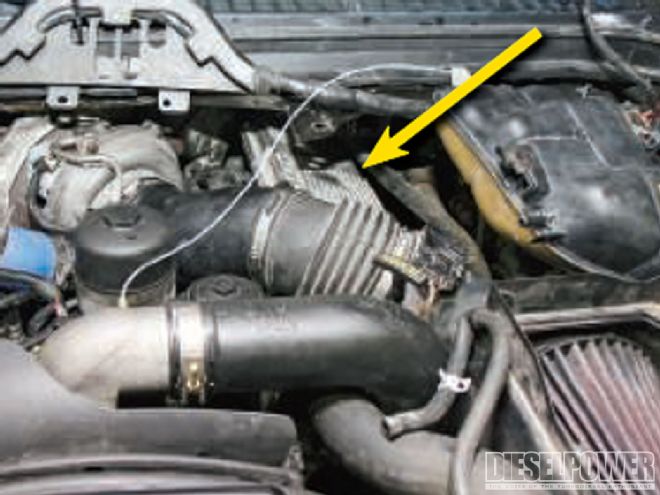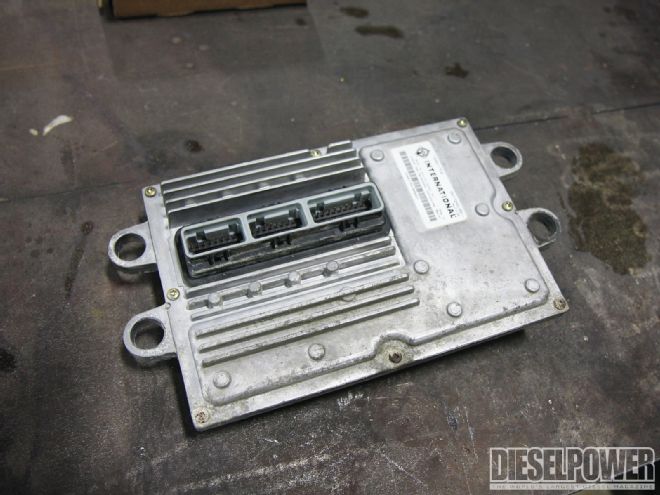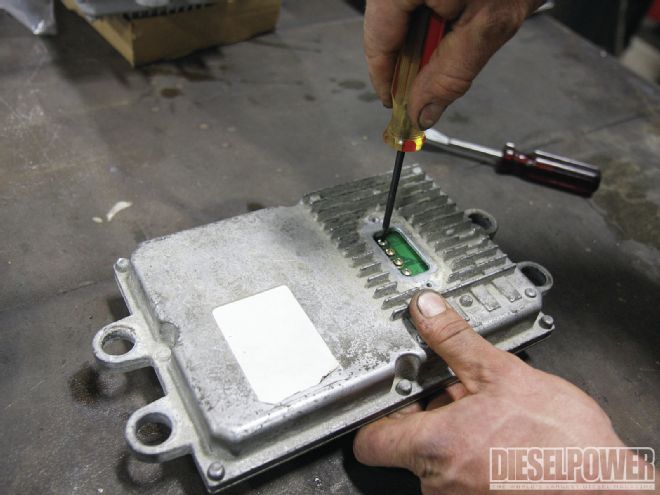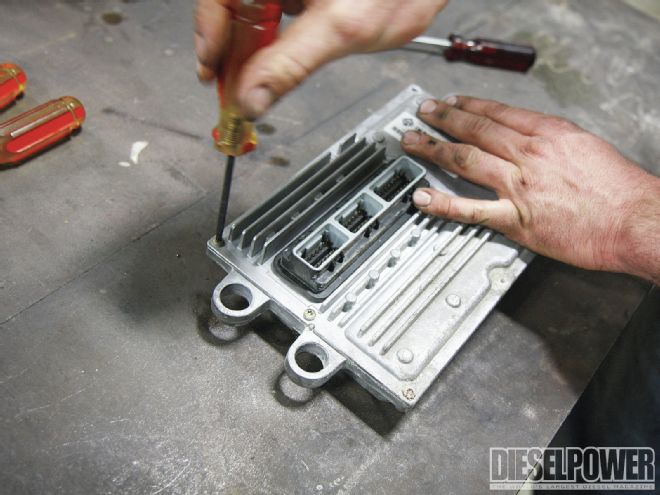Many issues associated with the 6.0L Power Stroke come down to simple maintenance, or lack thereof. It’s an engine that doesn’t tolerate things like dirty oil, contaminated fuel, or inadequate winter preparation. However, the 6.0L’s charging system might be one of the most overlooked maintenance items—and it can cost you a considerable chunk of change if it’s neglected long enough.

| This F-250 was brought to Flynn’s Shop in Alexander, Illinois, for hard-starting issues. After the batteries checked out OK with a load meter, Chad Flynn plugged in his scan tool, which confirmed the fuel injection control module (FICM) wasn’t sending enough voltage to the injectors. The FICM voltage should never drop below 48 volts; the engine won’t start with less than 30 volts.
Weak Batteries Kill FICMs
Let’s face it: Most of us don’t keep an eye on the health of our batteries. We usually just wait until they’re dead, replace them, and go on with our lives. The problem with this on a 6.0L is that when your batteries become weaker and the truck gets harder and harder to start, the fuel injection control module (FICM) is being damaged. The FICM, which is called an injector driver module (IDM) on 7.3L Power Strokes, is in charge of sending the correct voltage to each injector solenoid in order to fire it. This pulse has to be 48 volts at all times (key-on, cranking over, and running), or performance and efficiency will suffer.

| affordable 6 0l Solution ficm Module
FICM Fix
Flynn’s Shop has seen tons of FICM failures over the years, so much so that it now offers an affordable fix for the problem. Whereas most dealerships will replace the entire FICM (which, with diagnostics and labor can cost more than $1,100), Flynn’s Shop addresses the side that fails—the driver side. It’s as simple as pulling the FICM apart and bolting on a new driver side, and the novice mechanic can perform the job in a couple of hours. The best part about this 6.0L solution is it’s just a simple, bolted-together component. So if you don’t feel like breaking out the hair dryer, re-soldering resistors on the circuit board, or running the risk of ruining your salvageable FICM by trying to repair it, this route is for you. And it will still save you money.

| Notice just 40.5 volts are being supplied here. Much lower than this and you could see low-voltage injector codes.
Life With A Fresh FICM
It’s common for customers to be surprised by how much better their truck runs with a fresh FICM. In a lot of cases, startups are quicker (especially cold-weather startup), throttle response is crisper, and even fuel economy can improve. In all cases, the truck feels more powerful. This is because when the FICM dies, it dies a very slow death, and you hardly notice the power loss, which is actually the injector solenoids becoming lazy from lack of voltage. However, what you do eventually begin to notice is how much harder it is to start your truck.
*Our recommendation: Keep a healthy set of batteries under the hood (don’t wait until they die to replace them) and make sure your alternator is still capable of fully recharging your batteries (the 95-amp, 6G series units from the factory weren’t the greatest). Keep both of these things in tip-top shape, and your FICM could last 200,000 miles—or more.
